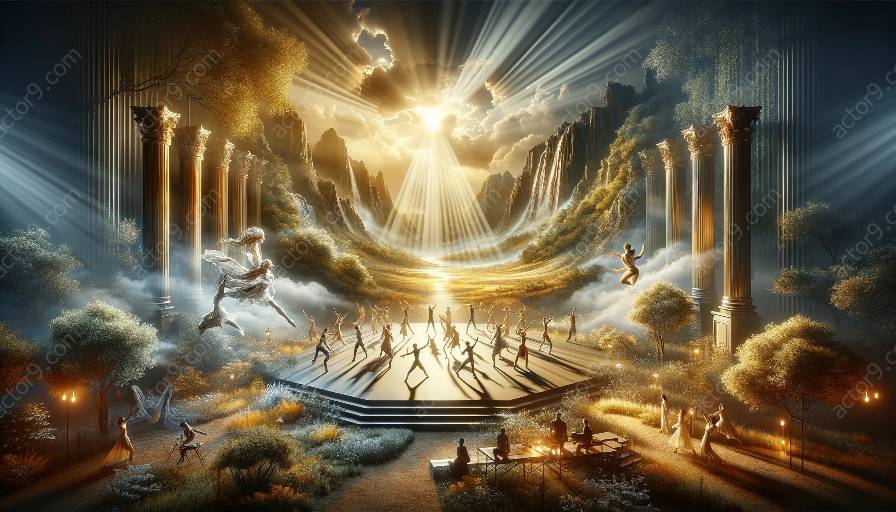Physical theatre is a form of performance that emphasizes the use of the body as a means of storytelling. It combines elements of dance, mime, and gesture to create captivating narratives without relying on traditional dialogue. One crucial aspect of physical theatre that contributes to its impact is the role of lighting. In this article, we will delve into the significance of lighting in physical theatre, and how it influences visual aesthetic and narrative development.
The Role of Lighting in Physical Theatre
Lighting plays a multifaceted role in physical theatre, serving as a powerful tool for setting the mood, creating atmosphere, and guiding the audience's focus. In physical theatre, lighting is often used to highlight the performers' movements, accentuate emotions, and establish the visual landscape of the performance space. By strategically manipulating light and shadow, physical theatre productions can evoke a wide range of sensations and emotions in the audience.
Visual Aesthetic
The visual aesthetic in physical theatre is heavily influenced by the lighting design. The use of different lighting techniques such as spotlights, color washes, and gobos can transform the stage, creating dynamic and visually striking scenes. Lighting can sculpt the performers' bodies, accentuate their expressions, and define the spatial dynamics of the performance. It allows for the creation of visually stunning tableaus and enhances the overall spectacle of the production.
Narrative Development
Through lighting, physical theatre productions can craft and convey compelling narratives. Changes in lighting intensity, color, and direction can symbolize shifts in the storyline and character dynamics. For example, a sudden change from warm, inviting light to stark, harsh lighting can signify a dramatic turning point in the narrative. Lighting cues can also guide the audience's interpretation of the story, drawing attention to key moments and enhancing the emotional impact of the performance.
Theatrical Lighting Techniques
Various lighting techniques are employed to achieve specific visual and narrative effects in physical theatre. Silhouetting, for instance, involves casting the performers' shadows onto a backdrop, adding depth and intrigue to the visual composition. Similarly, cross lighting can be used to create dimensional effects, while color palettes can evoke different moods and themes. The interplay of light and darkness can be choreographed to synchronize with the performers' movements, further enriching the storytelling experience.
Conclusion
In conclusion, the role of lighting in physical theatre is integral to the creation of a compelling visual aesthetic and the development of narratives. The careful orchestration of lighting design in physical theatre productions enhances the emotive power of the performance, engaging and captivating audiences in unique and immersive ways.




































